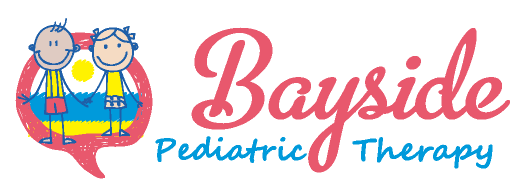Here are some speech and language therapy techniques that you can use at home to get your toddler to talk more.
1. Get them around other children their age or slightly older.
My son goes to an in home daycare where he is the youngest. He started at 7 months and now he is 3 years old. He is an extremely picky eater at home but at daycare he will eat most anything because the kids around him are eating whatever is in front of them. At daycare, he sits down and listens to long books during circle time because that’s what the other kids do. At home his attention span to a book for only 1-2 minutes. Kids just relate better to other kids. Being around other kids that talk might get them more interested in talking themselves. You don’t want them to be around kids too old because their speech and language is too advanced for a toddler to imitate. Finding kids that are just a step above yours will hopefully push them up to the next speech and language milestones.
2. Be interested in what they are interested in.
If your child loves stacking blocks think of words and phrases you can say while they are stacking blocks. Phrases you can use are: put on, oh no fall down, need more, up up up, etc. Try to use simple words and phrases that they could imitate while playing with them. Think 1 step above where they are. If they are using words but not putting them together, use only 2-3 word phrases. If they are using 2-3 word phrases use 4-5 word phrases.
3. Wait and give them time to talk.
As a parent you can interpret what they would say if they could talk. For example, if you know that when your child hands you the Play-Doh container it means he wants you to help him open it. Don’t just open it for them! Wait and see how they tell you they need help. If they don’t talk, say “help?” and see if they imitate the word. If you or a sibling talks for them, they have no motivation to talk. Count to 10 in your head before you open the container of Play-Doh or get their favorite snack.
4. Limit TV and technology.
Technology can decrease and delay their language skills. There is a lot of research coming out about how screen time should be limited. The American Pediatric Association recommends avoiding all digital media (except video chatting) before the age of 2. Children between 2-5 should be limited to only 1 hour of digital media a day. That 1 hour should be an educational show or an educational app on a phone or tablet.
5. Use simple sign language.
If your toddler is not talking at all, simple signs can help. I tell parents all the time, I can’t go in their little throats and push their vocal cords together to say sounds and words but I can bring both their hands together to get them to sign “more” for more bubbles. Your toddler has to learn they have to do something to get what they want. They can’t just reach, cry, point, or grunt. They have to use language! Every time you push their hands together to sign “more,” they are hearing you say the word “more” and usually will start repeating the word “more.” They realize their words have power. When teaching them “more”, start by bringing their hands together for them, then touch their elbows to see if they’ll do it, then just their hand, until they do it on their own. What you don’t want to do is continue to tell them to sign “more” and they just cry and you both get frustrated. If after 5 seconds they aren’t signing, grab their hands and make them do it. They may hate it for a second, but when you immediately give them what they want they will quickly forget. Some signs to start off with are: more, all done, please, help, and open.
If your child is still having difficulty or you have concerns, getting a speech and language evaluation is recommended. Early intervention is so important! Please talk to your pediatrician about it.

